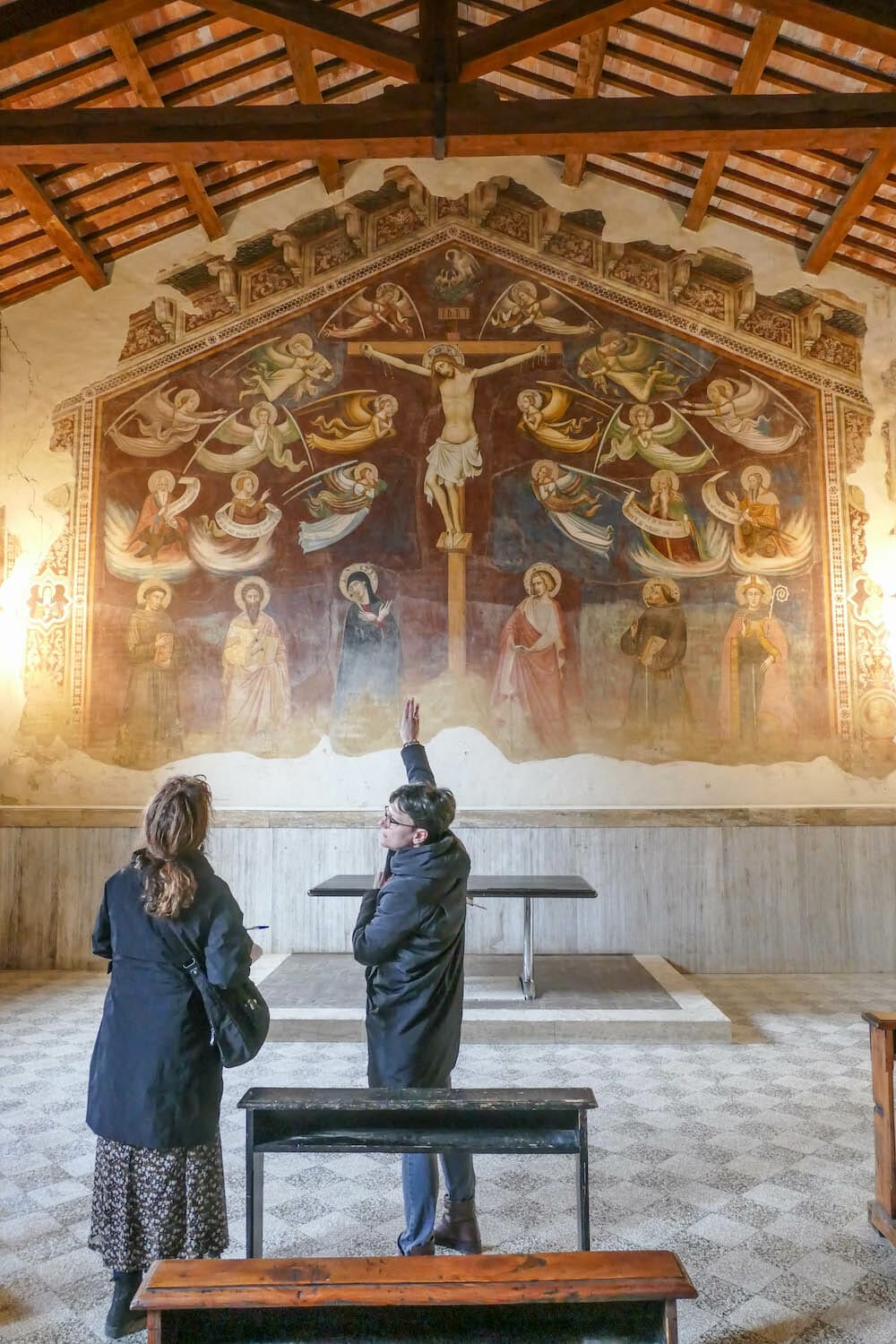CITTÀ DELLA PIEVE Umbria Italy Review – Tuscany Déjà Vu - history rich streets and home of many historic art works, Saffron Museum

If you’ve traveled a bit in Tuscany, its nearby neighbor Città della Pieve might give you that subliminal nag that you’ve been here before. It’s likely the red bricks, more typical of Tuscany than Umbria’s paler bricks.
This is a charming place worth a good long wander. Its walls, churches and narrow lanes tell stories of the past. The cathedral dates back to the 8th Century and some towers in the city walls were once used as prisons. You too may find that it is the lesser historic oddities—the stairs leading nowhere, the vestiges of arches over doors that no longer exist, the walkways above once linking merchants’ homes and stores, and the skinny streets that wouldn’t allow horses to pass that capture your imagination and catapult you into picturing its long list of befores—Etruscans, Lombards, changing rule by Peruggia or Vatican, etc. Bring along a translator so that you can marvel that the single file only paths called streets and their somewhat wider connectors often have names that tell you their past who’s who. Piazza di Spagna, for example, is where the Sephardic Jews lived; Via delle Forbici (scissors) tells you it’s where you went to find the tailors, etc.
Those with more of a studious bent or art history loving leaning, should definitely short list Città della Pieve as the birthplace of The Perugino, whom nearby Panicale similarly puts in a historic claim to fame through association by having one of his most famous works in their main church. The Perugino in turn is known mostly for his most famous student, Raphael, but the reclaimed records of his contract negotiations that you see on a religious club's walls–showing his price dropping from 200 to 100 and then down to 75 Florins-- speaks to the struggling artist label having deep roots, even with the Renaissance masters.
Città della Pieve – Well-known to Italian Chefs
Foodies will also likely love Città della Pieve’s Saffron Museum and learning about this area’s culinary and other contributions from this plant. After Iran and then Greece, Italy comes in a distant third as a saffron producer, but this is Italy’s saffron central. Historically saffron was used for textiles and painting, in addition to cooking. It’s been a precious commodity then as now—at one point you would be sent to prison if you tried to smuggle it beyond the city walls. Today, chefs from all over Italy come to Città della Pieve for it, though as in most of Umbria, this and so many treasures remain relatively undiscovered by global tourists.
For more information on setting up a similar tour of Città della Pieve, contact either Chiara via the Podere Molinaccio or Raffa of Poggio del Pero
Gianni Vinerbi is a saffron farmer and a driving force of Citta della Pieve's Saffron Museum. He has traveled the world meeting fellow saffron farmers in Iran, Greece and beyond. The museum has many informative murals and displays that tells you the a-z of saffron.
Editor’s Note—Podere Molinaccio and Poggio del Pero are part of the Divertimento Group.



































